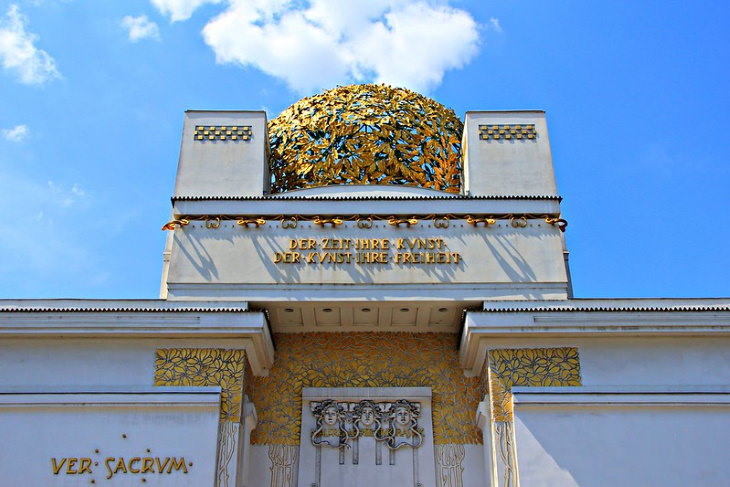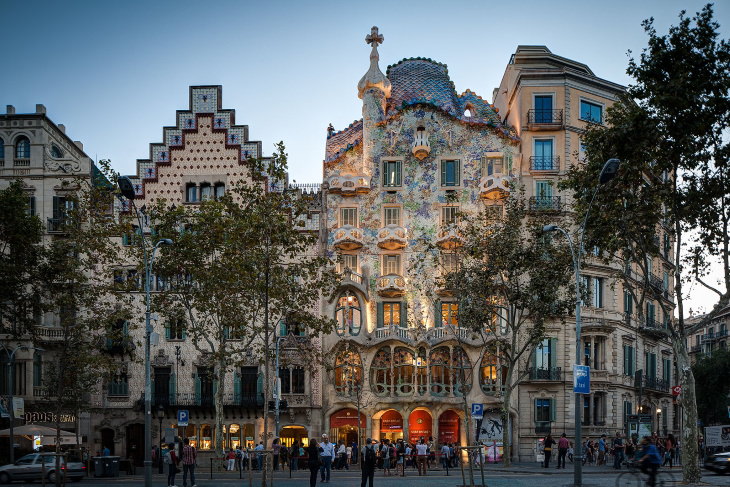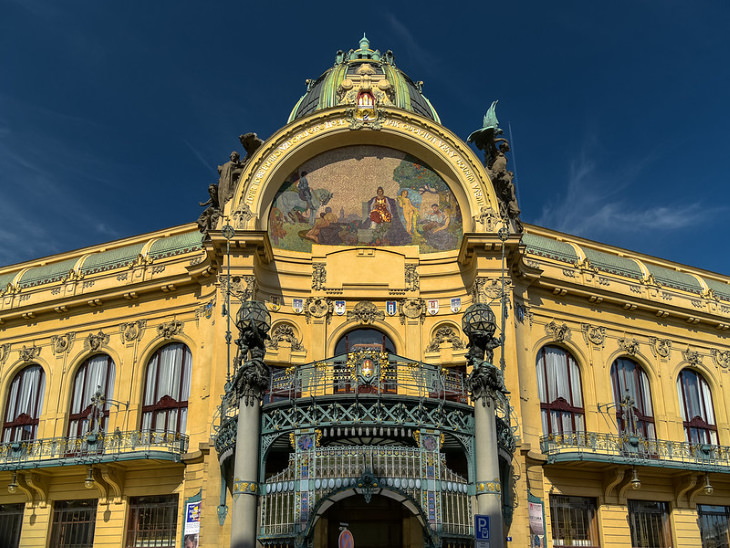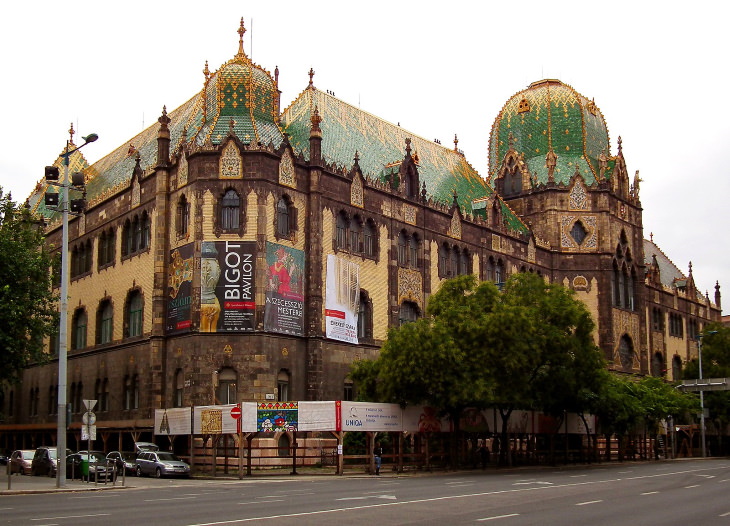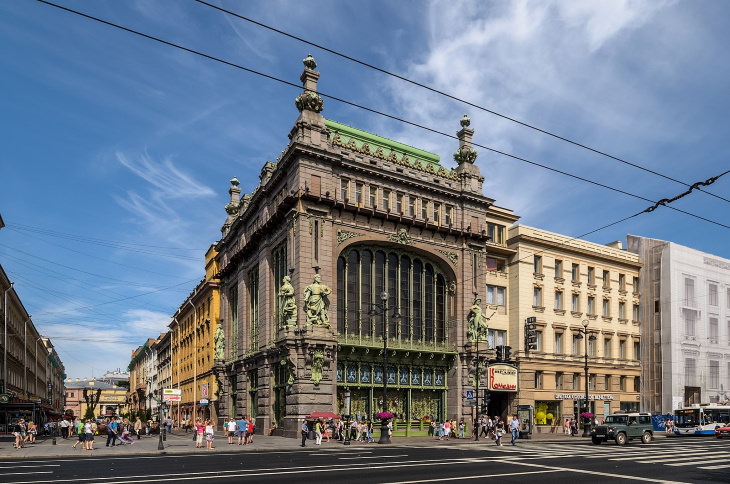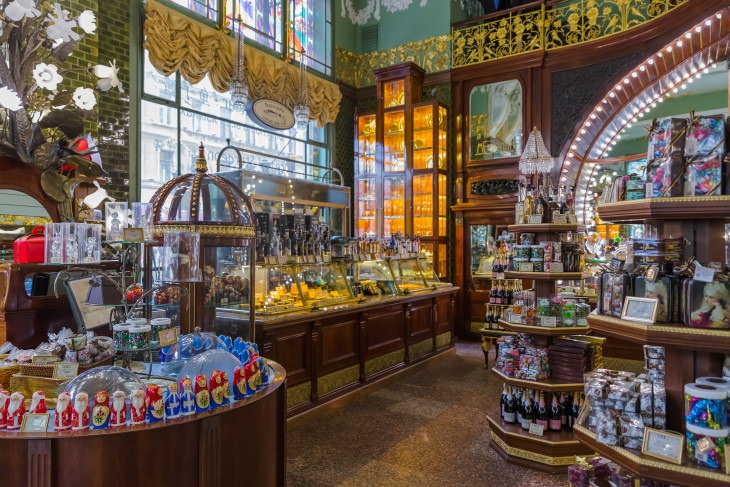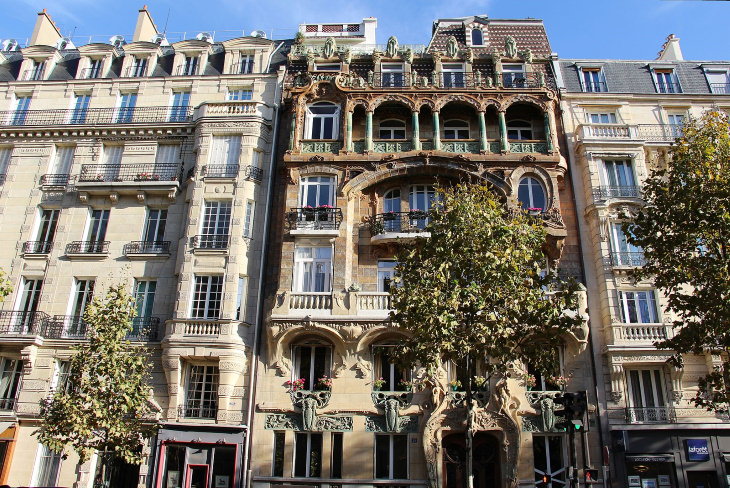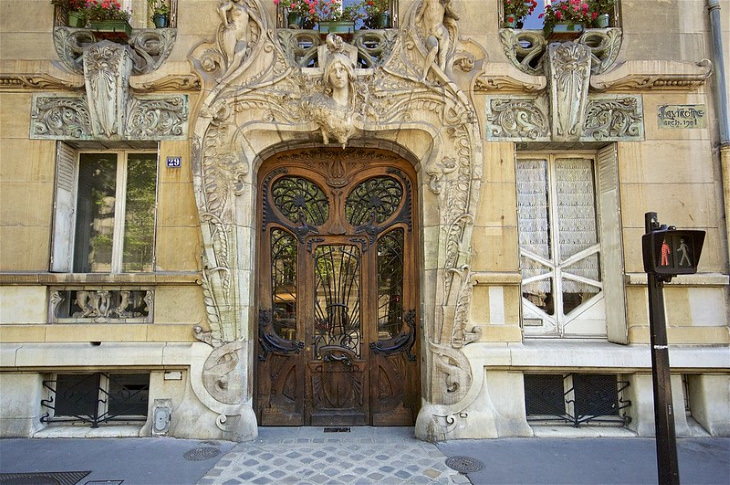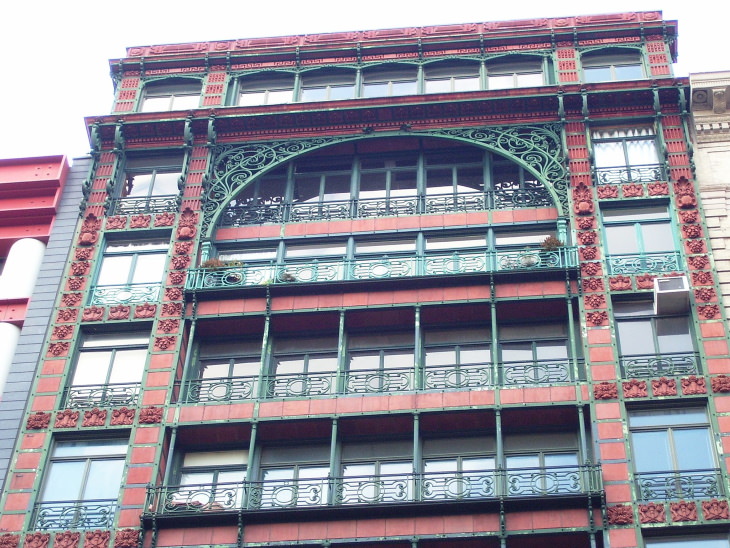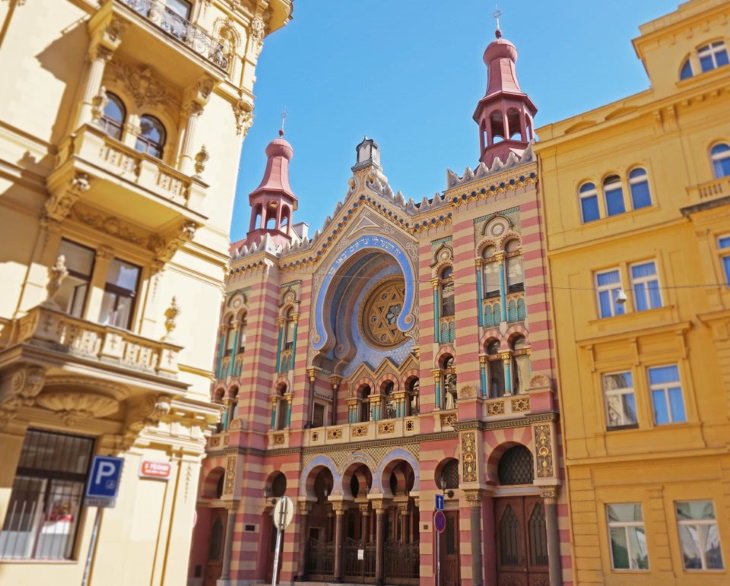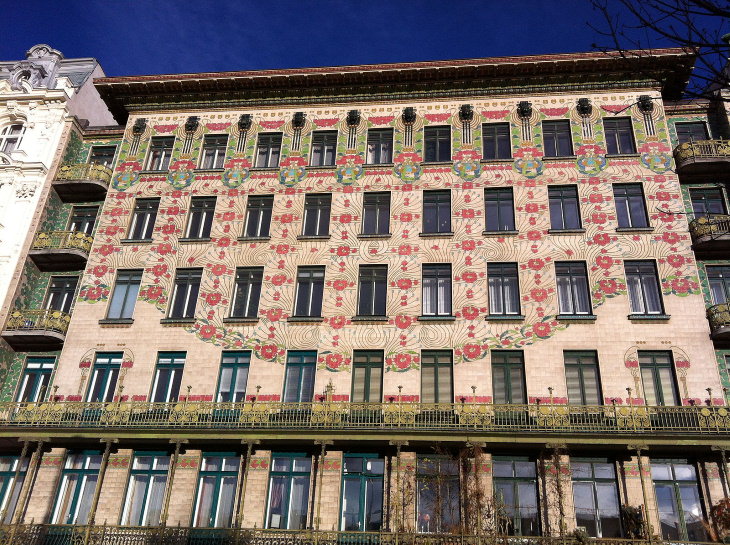1. The Secession Building in Vienna, Austria
Let's start this list with a building that was created by an Art Nouveau architect for Art Nouveau artists - the headquarters if you will. The Secession Building is an exhibition hall designed by architect Joseph Maria Olbrich in 1898. The white cubic building with a golden floral dome made of laurel leaves and berries was the ultimate statement of the Vienna Secession, which is the name Austrian artists gave to their version of the Art Nouveau movement.
The building was the headquarters of the artists and designers of the Secessionist movement, who resigned from the Association of Austrian Artists in the hopes of creating a brand new revolutionary style. The motto of the movement is written in gold above the entrance, “Der Zeit ihre Kunst/ der Kunst ihre Freiheit”, which can be translated as “To every age its art. To every art its freedom.”
2. Casa Batlló in Barcelona, Spain
The Spanish architect Antoni Gaudi needs no introduction. The genius architect is one of the greatest architects of the 20th century. To this day, you can spot buildings in his signature style as you walk the streets of Barcelona. After all, Gaudi's crown creation, the Sagrada Familia, is the city’s most prominent architectural landmark.
Gaudi's distinguished style was inspired by nature both in terms of structure and aesthetics. Although his later works, including the Sagrada Familia, are considered to be his own style altogether and have no match anywhere else in the world, his earlier work, like the Casa Batlló on the Passeig de Gràcia is believed to be an example of Art Nouveau.
Built in 1877, Casa Batlló is a residential building commissioned by Lluís Sala Sánchez. It is considered to be one of Gaudi's best works. Like many of Gaudi's creations, the building was inspired by Biblical motifs, namely the legend of St. George and the Dragon. Like a dragon's scaly body, the building's facade is decorated with colorful pieces of broken ceramics, and the roof of the building is covered in tiles that were shaped to resemble a dragon's scales.
3. Hotel Tassel in Brussels, Belgium
The Hotel Tassel is believed to be the first true Art Nouveau building. The building is located at 6, Rue Paul-Emile Jansonstraat in Brussels, and it was created in 1893 by Victor Horta, a Belgian architect and designer, as well as one of the founders of the Art Nouveau movement. The Tassel Hotel was originally built as a residential building for Belgian scientist and professor Emile Tassel.
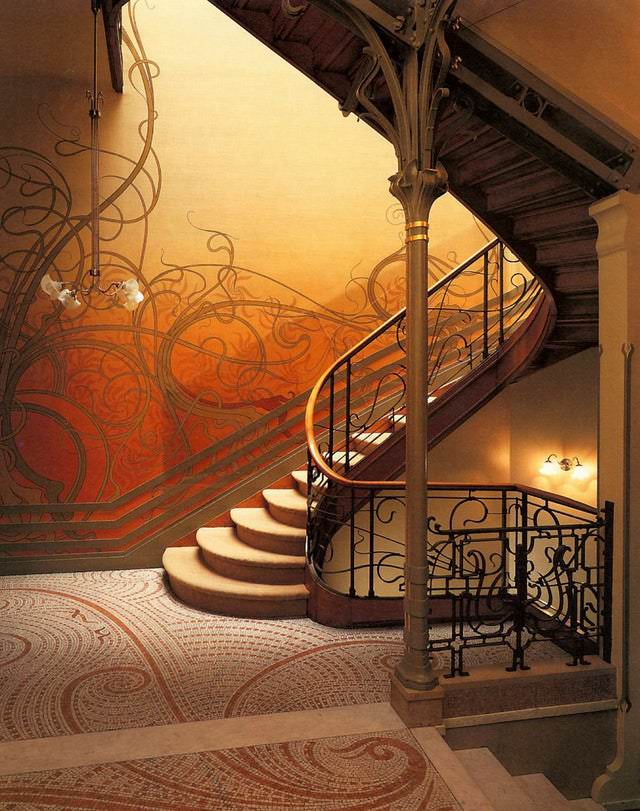
The townhouse may not look particularly special from the outside, but inside, you can see the naturalistic patterns and the characteristic Art Nouveau use of materials and decoration right away. Hotel Tassel is a UNESCO World Heritage Site since 2000.
4. The Municipal House in Prague, Czech Republic
Prague is another one of those cities where you can spot a lot of Art Nouveau buildings. One of the most outstanding Art Nouveau landmarks of the city is the Municipal House, a civic building located on Náměstí Republiky next to the Powder Gate in the historical part of the city. The Municipal House features a glass dome, a mosaic called Homage to Prague by Karel Špilla, and plenty of sculptures and decorations. Below, you can see the Smetana Hall, a celebrated concert venue within the building.
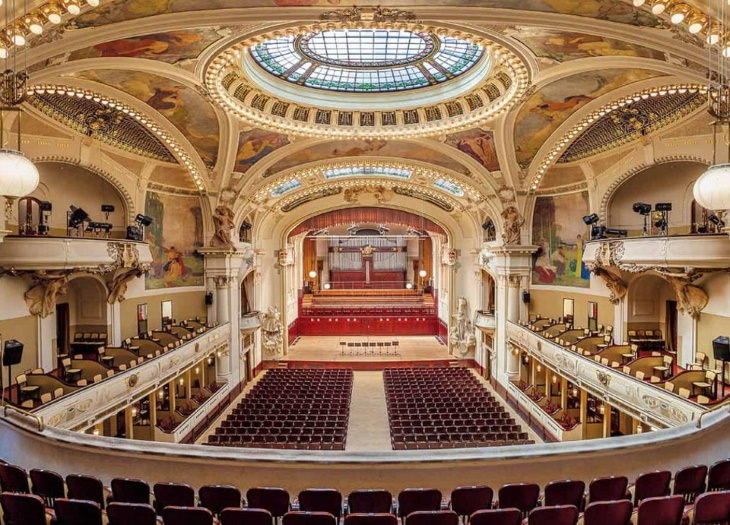
Image Source: Reddit
The Municipal House was built in 1905 and designed by Osvald Polívka and Antonín Balšánek to replace The Royal Court. Between 1383 and 1485, The Royal Court was the residence of the King of Bohemia, but it was abandoned and demolished in the early 20th century.
5. The Museum of Applied Arts in Budapest, Hungary
Art Nouveau architecture in Hungary is somewhat different, as it mainly focuses on folklore and historical elements rather than natural motifs alone. There are many examples of Art Nouveau architecture in the city, but the Hungarian Museum of Applied Arts definitely stands out.
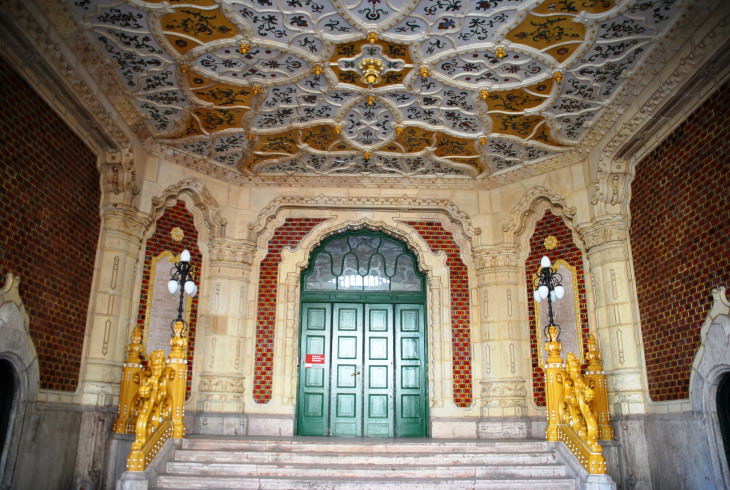
The building was finished in 1896 and designed by Ödön Lechner and Gyula Pártos. It's meant to unite Eastern motifs with Neogothic elements. The green and gold roof of the museum is definitely the focal point of the building. The roof is made of Zsolnay porcelain tiles that shine in the sun.
6. House with Chimaeras in Kyiv, Ukraine

The House with Chimaeras (also known as the Horodecki House) is a rare example of Art Nouveau from Ukraine. Certainly, it's one of the most extraordinary early 20th-century buildings in the country that's often described as 'sinister' or 'gloomy'. Despite that, the building attracts many tourists every year.
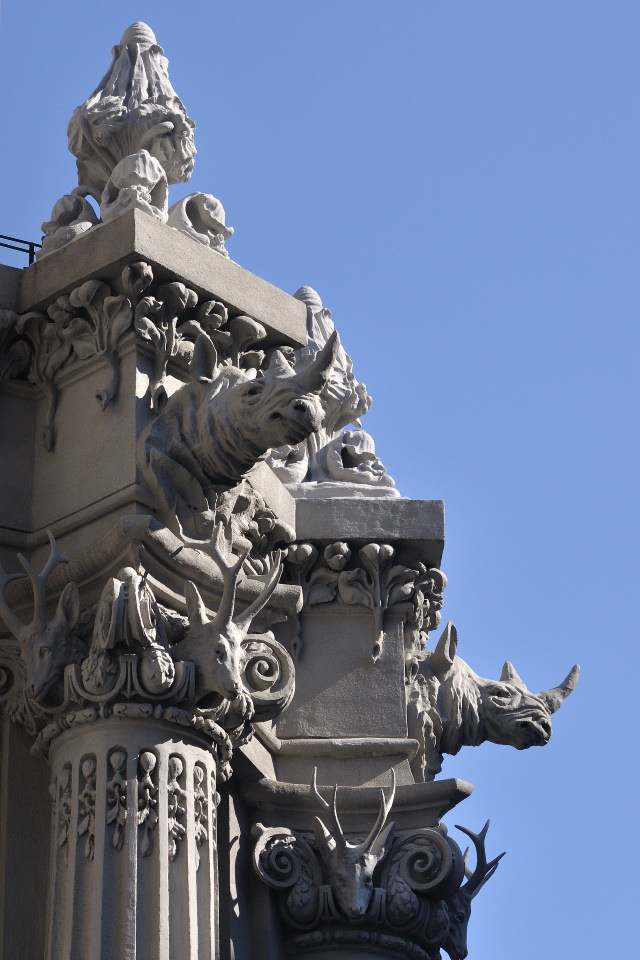
The building is located between Bankova Street and Ivan Franko Square in Kyiv, and it was designed by the Polish-Ukrainian architect Wladyslaw Horodecki in 1901-1903. The asymmetrical and chaotic construction features countless statues of concrete animals, gargoyles, and various grotesque elements both on the facade of the building and inside.
7. Eliseef Emporium in Saint Petersburg, Russia
Now, this is one of the most luxurious shops we've ever seen! The building is a retail and entertainment center located at 56 Nevsky Prospekt, and it is considered to be one of the best examples of Art Nouveau in Russia. The building was designed by architect Gabriel Baranovskii in 1902 for the Elisseeff Brothers, both of whom were wealthy merchants.
During the Russian Revolution of 1917, the building was taken from the family and proclaimed to be in ownership of the state. It is during this time that the building was turned into a shop that came to be known as Gastronom No. 1.
8. The Karlsplatz Pavilion Metro Station in Vienna, Austria
The Karlsplatz Stadtbahn Station is a former railway station. The building is part of the projects carried out by the Vienna Secession. It was designed by Otto Wagner and Joseph Maria Olbrich, the same architect who built the Secession Building. Otto Wagner, in turn, was an Austrian architect, furniture designer, and urban planner responsible for the creation of some of the key architectural landmarks in Vienna.

The beautiful steel framework and marble decoration of the exterior make this former railway station a true work of art. Today, the building is functioning as an art exhibition hall.
9. The Old England Building in Brussels, Belgium
Currently the home of the Musical Instrument Museum, The Old England Building was initially designed as a department store. The tall building is located close to the Place Royale and the Mont des Arts, two other landmarks in Brussels.

The Old England Building was created in 1899 by Paul Saintenoy, and it combines glass and steel elements rich with intricate details characteristic of Art Nouveau.
10. The Lavirotte Building in Paris, France
Paris is another European city with plenty of Art Nouveau buildings. One of the most outstanding examples is the L'immeuble Lavirotte building at 29 Avenue Rapp. The residential building was built by the architect Jules Lavirotte in 1901.
The generously decorated facade of the 6-floor building features countless beautiful sculptures and ceramic tiling. One could spend hours admiring all the details of this townhouse!
11. The Entrance to the Porte Dauphine metro station in Paris, France
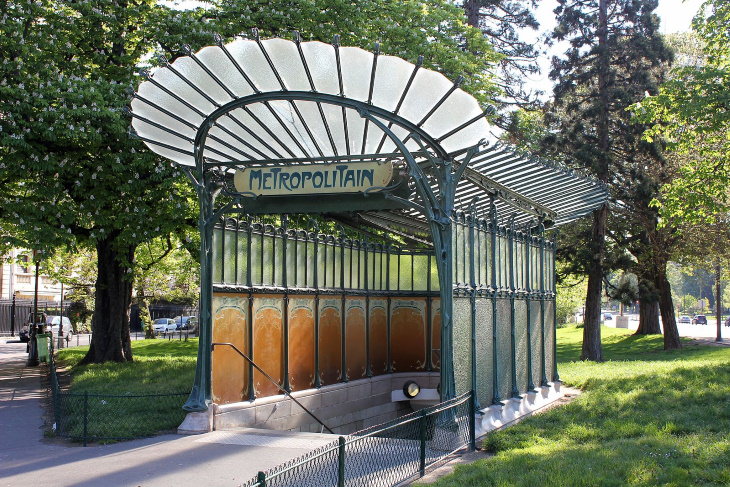
If you want to see Art Nouveau in Paris, you don't have to hunt down specific addresses. The city's oldest subway entrances were designed by Hector Guimard in the Art Nouveau era, and they are very characteristic of the era.
12. The Singer Building, New York City, USA
The Singer Building is one of the few true Art Nouveau buildings in the United States. Located at 561 Broadway in the SoHo neighborhood of Manhattan, New York City, the building was created for the Singer Manufacturing Company between 1902 and 1904. The building's facade was designed by Ernest Flagg and it features avant-garde steel details meshed with glass and terracotta decorative elements.
13. Alberta Street in Riga, Latvia
Yet another city that's brimming with Art Nouveau architecture is Riga, the capital of Latvia. The city is often overlooked by travelers, but it actually has the highest concentration of Art Nouveau architecture in the world. It is estimated that one-third of the city's buildings are Art Nouveau!

Compared to other European cities, the Art Nouveau of Riga may be a bit less ornamental, but it's still worth taking a look. Alberta Street is considered to be one of the best places to admire Art Nouveau buildings in Riga.
14. The Jubilee Synagogue in Prague, Czech Republic
The architecture of the Jubilee Synagogue in Prague shows yet another distinct side of Art Nouveau. This building was created in 1906 by the Austrian-Jewish architect Wilhelm Stiassny and named in honor of the 25th anniversary of the Austrian Emperor Franz Joseph Ι.
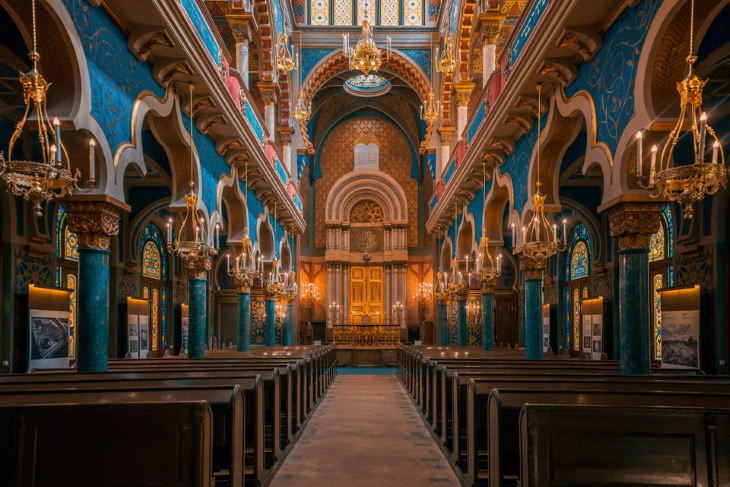
The insanely colorful building combines Art Nouveau with Moorish Revival style elements, and it's definitely the most fun-looking place of worship we've ever seen and definitely a true gem!
15. Majolikahaus in Vienna, Austria
Like many of the landmarks we've already mentioned in this article, the Majolikahaus was Otto Wagner's creation. It is an apartment building in Vienna that was completed in 1898. The facade of the building consists of small ceramic tiles, also known as majolica, which gave the building its name.

The Majolikahaus is heavily decorated with vibrant floral motifs, a key characteristic of Art Nouveau, as well as metal decorative elements. The building is located on Linke Wienzeile in the historical center of the city, close to the Naschmarkt outdoor market.
Share these beautiful buildings with family and friends!

